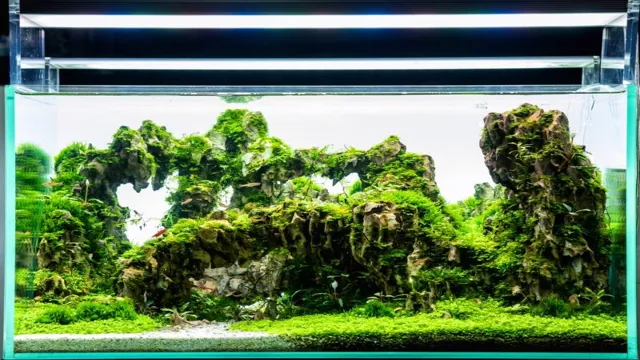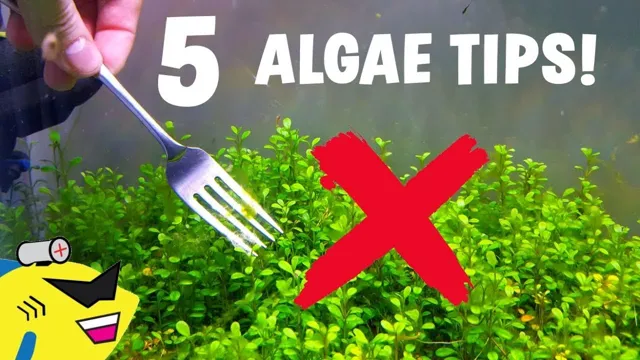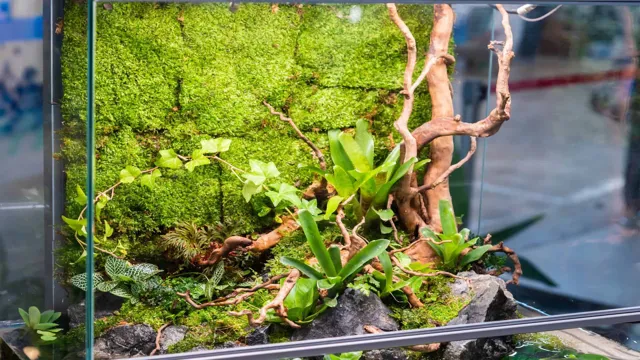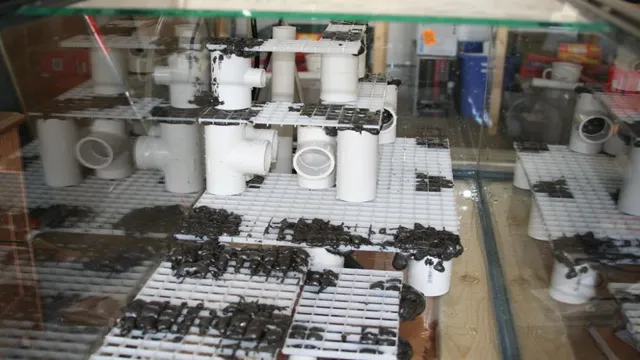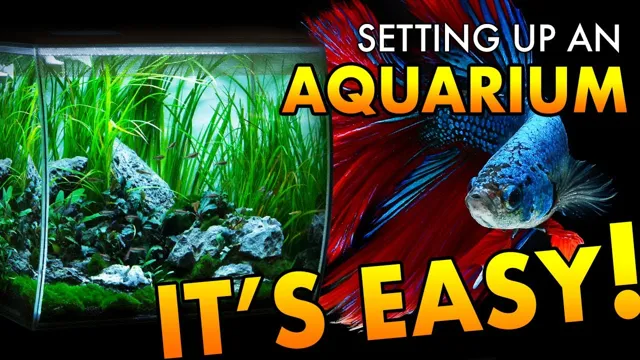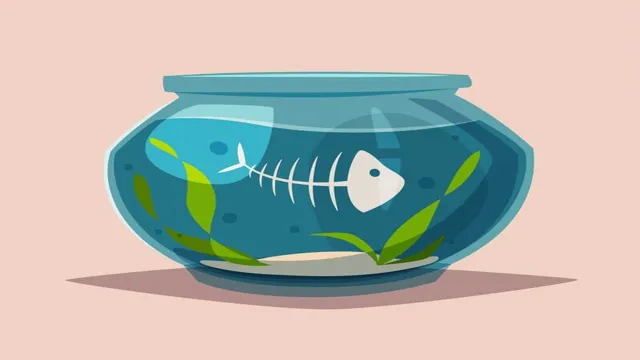If you’re looking for a low-maintenance, visually attractive addition to your aquarium, growing Java Moss might be just the thing for you. This hardy and versatile aquatic plant is a favorite among aquarium owners for good reason; it’s relatively easy to propagate, doesn’t require much light or CO2, and looks great as a carpet or accent piece. Plus, it provides habitat and hiding places for fish and other aquatic creatures.
In this post, we’ll take a closer look at Java Moss, including how to grow it, care for it, and use it to enhance your underwater world. So, grab your snorkel and let’s dive in!
Introduction
If you’re looking to add some greenery to your aquarium, java moss might just be the perfect plant for you! This hardy, low-maintenance moss is great for adding a natural feel to your tank while also providing a cozy hiding place for your fish. Growing java moss is easy and straightforward, even for beginners. All you need is a few handfuls of moss, a good light source, and some patience.
To get started, simply attach the java moss to a piece of driftwood or rock using fishing line or a plant glue. Then, place it in your tank and watch it grow! With proper care, your java moss will thrive and provide a beautiful, natural environment for your aquatic friends.
What is Java Moss?
Java moss, also known as Taxiphyllum barbieri, is a popular plant in the aquarium hobby due to its unique appearance and benefits for aquatic life. This moss is native to Southeast Asia and is commonly found in freshwater streams and rivers. Java moss is a versatile plant that can grow in a variety of conditions, making it an excellent choice for beginner and experienced aquarium enthusiasts.
Its distinct appearance includes tiny, green leaves that grow in a thick, tangled mass and can be attached to rocks, driftwood, or other objects in the aquarium. Java moss provides an excellent habitat for shrimp, fry, and other small aquatic animals, as it helps to filter the water and provides hiding places. This plant is easy to care for and can thrive under low to medium light conditions, making it an excellent choice for those looking to add some greenery to their aquarium without excessive maintenance.
So, if you are looking for an ideal plant for your aquarium, Java moss is definitely worth considering!
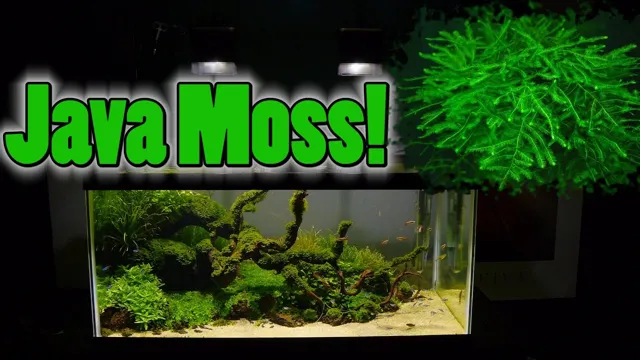
Why grow Java Moss in an aquarium?
Java Moss is a type of aquatic plant that has become popular in the aquarium hobby due to its many benefits. It is easy to grow, low maintenance, and adds a beautiful natural look to any aquarium. Java Moss can be attached to rocks, driftwood, or even left floating in the water.
It is also versatile in that it can be used in all types of aquariums, from freshwater to brackish water tanks. The keyword “Java Moss” is essential in optimizing this blog post for search engines, as it is the main topic of discussion. Overall, growing Java Moss in an aquarium is a great way to enhance the aesthetics and health of aquatic life.
Preparation
If you’re looking for a plant that’s easy to grow and maintain, then Java Moss is the perfect choice for you. Before you start growing it, make sure that you have the necessary equipment and a suitable environment for your Java Moss to thrive. Firstly, ensure that your aquarium has a filter, as it’s important to keep the water clean and healthy.
Secondly, you’ll need a substrate to anchor the moss. For Java Moss, it’s best to use gravel or rocks as they provide the perfect surface for the plant’s roots to attach to. Once you have the basics covered, it’s time to get your hands dirty.
Spread out the plant evenly over the substrate and gently press it into the water. Be sure to take care not to damage the moss as you’re spreading it. As it begins to grow, you’ll notice that it forms luscious green carpets that are a delightful sight to behold.
With patience and care, your plant will continue to flourish, making a beautiful addition to your aquarium. So, if you’re wondering how to grow Java Moss in an aquarium, remember to prepare well and have fun with it!
Materials needed
To prepare for a project, it is essential to have all the necessary materials on hand. The first step is to review the instructions or guidelines carefully to ensure that you gather everything you need. It is frustrating to start a task only to realize that something is missing – it can be a waste of time, money, and effort.
Depending on the project’s nature, the materials required can vary significantly. Therefore, it is crucial to double-check the list and ensure you have everything before beginning. Some common materials needed may include tools, equipment, raw materials, measuring devices, safety gear, and so on. (See Also: How to Care for Saltwater Aquarium Fish: Essential Tips for Keeping Your Fish Happy and Healthy)
Once you have all the necessary materials, organize them in a way that makes it easy to access them during the project. This ensures that you can complete tasks quickly and without disruption. Always prioritize preparation for any project since it contributes incredibly to the success of the project.
Tank setup for Java Moss
To prepare your tank for Java Moss, you should begin by selecting a suitable location for the tank. Java Moss requires moderate to low lighting and thrives in slightly acidic water. Ensure that the tank you choose is free of direct sunlight and has a pH level between 6 and
Additionally, Java Moss grows well in a substrate made of sand or gravel, which provides good water circulation and allows the moss to attach itself easily. Before adding the moss, make sure the tank is free of any debris or contaminants that could harm the plant. Once you have prepared the tank, you can begin adding Java Moss to enhance the aesthetic value and natural filtration of your aquarium.
Remember to conduct regular maintenance and water changes to ensure a healthy environment for your Java Moss and other aquatic life. With proper setup and care, Java Moss can thrive and become a beautiful addition to your aquarium.
Growing Java Moss
If you’re looking to add some greenery to your aquarium, growing java moss is a great option. This aquatic plant is easy to care for and provides many benefits to your underwater habitat. First, you’ll need to attach the moss to a surface, such as driftwood or rocks.
You can use thread or fishing line to tie it down until it attaches naturally. Since java moss thrives in low to medium light, it’s important to avoid overexposing it to intense light. Additionally, this plant grows best in cool water temperatures between 70-75°F.
As long as you maintain clean water and avoid excessive water movement, your java moss should continue to grow and flourish. Whether you’re trying to create a natural-looking aquascape or just want to add some live plants to your aquarium, growing java moss is a great way to enhance the beauty and health of your aquatic environment.
Acquiring Java Moss
Acquiring Java Moss is an essential step towards growing this popular aquatic plant in your freshwater aquarium. Java Moss is a hardy and easy to maintain plant that can add a lush and vibrant touch to your aquarium. There are several ways to acquire Java Moss, including purchasing it from local fish stores, online suppliers, or trading with other aquarium enthusiasts.
When selecting Java Moss, make sure to choose a healthy and vibrant-looking specimen with no signs of yellowing or browning. It’s also important to quarantine the moss before adding it to your aquarium in case of any unwanted pests or diseases. Once you acquire Java Moss, you’ll need to anchor it down with rocks or driftwood and provide it with enough light and nutrients to thrive.
With proper care, your Java Moss plant will grow and develop into a beautiful and natural-looking addition to your aquarium.
Attaching Java Moss to a surface
Growing Java Moss can be a great addition to your aquarium, and attaching it to a surface can be a bit of a challenge. One approach is to use a mesh or fishing line to secure the moss to a rock, piece of driftwood, or other decor item. Another option is to use a suction cup with a metal mesh pad, which can easily be attached to the glass walls of your aquarium.
Java Moss is a low-maintenance plant that can thrive in a range of water conditions, making it an ideal choice for beginners or those looking to add some greenery to their tank. With proper care, your Java Moss can quickly become a lush and vibrant addition to your aquatic environment. So why not give it a try and see how your fish and other aquatic creatures respond to the natural beauty of Java Moss!
Light and temperature requirements
Java Moss is an aquatic plant that can grow in a variety of conditions, and as such, has become popular in the world of aquariums. One of the key factors to growing Java Moss successfully is providing the right amount of light and temperature. Java Moss requires low to moderate levels of light, typically around 0. (See Also: How to Get Rid of Oil on Aquarium Surface: Quick and Easy Solutions)
5 watts per liter. It’s essential to avoid too much direct sunlight as it can damage the plant or cause it to grow too quickly, leading to an unkempt appearance. Additionally, maintaining the temperature in the range of 68-82°F (20-28°C) will ensure healthy growth.
Java Moss thrives in slightly acidic to neutral water, with a pH level of 0-
Overall, providing optimal lighting and temperature conditions will promote the growth and vibrant green appearance of Java Moss, making it an excellent addition to any aquatic setup.
Maintenance
If you’re looking to add some greenery to your aquarium, Java moss is a perfect choice. It’s a low maintenance plant that doesn’t require much attention, making it perfect for beginners. In order to grow Java moss, you’ll need to provide it with low to moderate light and a neutral pH level.
You can simply attach the Java moss to a driftwood or rock, and it will start growing on its own. One thing to keep in mind is that Java moss can get a bit wild and overgrow if not properly trimmed. However, trimming is easy, and it will help keep your aquarium looking neat and tidy.
By following these simple steps and providing proper maintenance, you can enjoy the beauty of Java moss in your aquarium for years to come.
Fertilization
When it comes to maintaining a healthy garden or lawn, fertilization is an essential step. Fertilizing supplies your plants with vital nutrients that they need to thrive. Additionally, regular fertilization can help reduce the risk of pests and diseases.
However, it’s important to remember that over-fertilization can have negative effects on your plants and the environment. When choosing a fertilizer, consider the nutrient content and the rate of release. Organic fertilizers, such as compost or manure, can be a great option as they provide a slow release of nutrients and help improve soil health.
It’s also crucial to follow the manufacturer’s instructions for application, taking into account the type of plant and soil conditions. With proper fertilization, you can ensure a lush, green landscape that will be the envy of the neighborhood.
Pruning
Pruning is a critical aspect of plant maintenance, and it involves the removal of dead, damaged, or diseased branches from a tree or shrub. It is an important process that helps to maintain the health and shape of a plant. Pruning also helps to improve air circulation and light penetration, which is essential for the growth and well-being of the plant.
This process should be done carefully and strategically to avoid damaging the plant. The best time to prune depends on the specific plant and its growth habit. For instance, some plants are best pruned in the winter when they are dormant, while others are pruned in the summer after they have flowered.
Regular pruning not only enhances the appearance of plants but also reduces the risk of pest and disease infestation. Remember, a well-pruned plant will reward your efforts with a healthier growth pattern and better-looking features!
Pest control
When it comes to keeping pests at bay, regular maintenance is key. Simple measures like sealing cracks, eliminating standing water, and keeping food containers tightly sealed can go a long way in preventing invaders from setting up shop in your home. But even with good habits in place, it’s important to regularly inspect for signs of infestations.
Look for telltale indications like droppings, gnaw marks, or chewed wires. If you do spot something, don’t hesitate to call in a professional. Ignoring the problem could lead to serious damage and potential health risks. (See Also: How to Calculate PAR Aquarium Lighting: A Guide for Beginners)
At the end of the day, prevention and vigilance are your best weapons against pests. Remember, as much as we may love animals, there’s no room for them in our homes when they’re causing damage or carrying diseases. Stay on top of your maintenance and inspection routine, and you’ll be well on your way to a pest-free home.
Conclusion
In summary, growing java moss in your aquarium requires patience, attention to detail, and a touch of creativity. Treat it like a fine delicacy, nourish it with the right amount of light and nutrients, and watch it thrive and beautify your aquatic environment. And remember: just like a good cup of coffee, java moss is all about finding the perfect balance between strength and subtlety.
Cheers to a mossy and magnificent aquarium!”
FAQs
What are the benefits of adding Java Moss to an aquarium?
Java Moss is a natural water purifier as it absorbs nitrates and waste, thus improving the water quality of the aquarium.
How much light does Java Moss need in an aquarium?
Java Moss can survive in low to medium light conditions, but it is recommended to keep it in moderate to high light intensity for better growth.
How often should you prune Java Moss in an aquarium?
It is advisable to prune Java Moss every 6-8 weeks, depending on growth rate, to maintain its shape and appearance in the aquarium.
What is the ideal temperature range for Java Moss in an aquarium?
Java Moss can thrive in a wide range of temperatures from 59-86°F (15-30°C), making it suitable for most aquariums.
How do you attach Java Moss to driftwood in an aquarium?
You can attach Java Moss to driftwood by tying it down with a fishing line or cotton thread, or even using a clear glue like cyanoacrylate.
What kind of fish prefer Java Moss in their aquarium?
Various species of fish such as shrimp, bettas, tetras, guppies, and goldfish enjoy Java Moss as a natural habitat and a source of food.
How long does it take for Java Moss to establish in an aquarium?
Java Moss can take up to 2-3 months to establish and grow fully in the aquarium, but it can also depend on factors such as lighting, nutrients, and water conditions.

